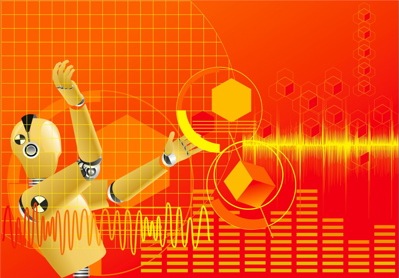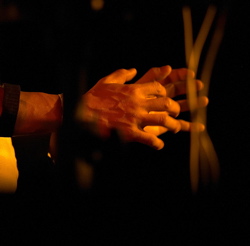A magazine where the digital world meets the real world.
On the web
- Home
- Browse by date
- Browse by topic
- Enter the maze
- Follow our blog
- Follow us on Twitter
- Resources for teachers
- Subscribe
In print
What is cs4fn?
- About us
- Contact us
- Partners
- Privacy and cookies
- Copyright and contributions
- Links to other fun sites
- Complete our questionnaire, give us feedback
Search:
Cyborg music

Every generation or so, some music technology comes along that revolutionizes the way our music sounds. Electric guitars gave the rock generation its sound, only for the 80s to see the rise of the synthesiser and electronic music. Since then the technology has moved on. Now a new generation of musicians who are also research scientists and engineers are pushing the boundaries again. They are connecting instruments and even their own bodies to computers to make music in new and weird ways. This gives them the ability to explore a massive range of sounds.
These new augmented instruments, such as a guitar processed by a laptop, have no boundaries to the sounds that can be made, and that means there is a whole new musical landscape for creative electronic musicians like Atau Tanaka of Newcastle and Jean-Baptiste Thiebaut at Queen Mary to explore.

The way it works is that you extract digital information from the instrument you are playing and map it to a virtual space where each point corresponds to a digital sound. How you place the sounds in that virtual space combined with how you play the instrument determines the sound that is heard.
In a traditional live performance using electronic music, the performer just programs a computer with the music to play in advance and then more or less lets it get on with it during the actual show. Augmented instruments bring back true performance - the artists need to develop a new virtuosity with their instruments. They have to play live again.
So what about cyborg music? Well, Atau Tanaka’s instrument is called the 'Biomuse'. What’s that? Well, basically it's himself. He is wired up with electrodes that detect the electrical signals that naturally travel around his body as his brain controls his movements. Those signals are captured by the Biomuse and mapped to the virtual sound space. His movement and gestures themselves become the music.
Augmented Instrument photo copyright Steve Welburn.


